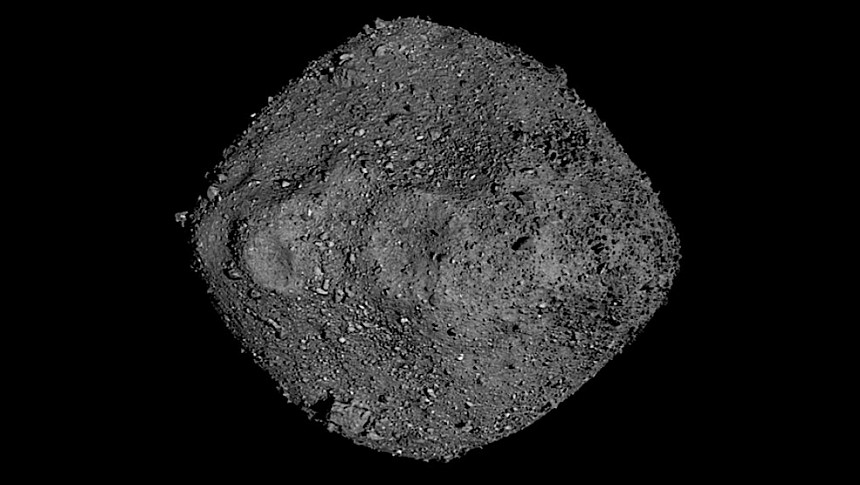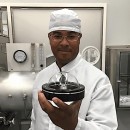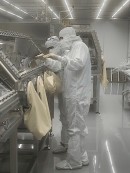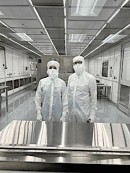After decades of passively studying the solar system through remote imaging and sensing, humanity has taken a more hands-on approach to space exploration. That means we've begun collecting samples of alien worlds and bringing them back to Earth for further study.
The largest mission of this kind, and the one everyone is looking forward to, is the Mars Sample Return. It's a mammoth undertaking that won't begin to unfold until the end of the decade, so there's some waiting to be done still. Until then, we can warm up with something called the OSIRIS-REx.
That would be a spacecraft that departed Earth in 2016, heading toward a piece of floating rock called Bennu, The asteroid is believed to be a remnant from the early days of our solar system, a piece of history 4.5 billion years old.
Because of this, Bennu is a prime target for exploration missions as it may contain clues to how organic material was transported to our planet and eventually turned into life as we know it. That's a pretty interesting assumption, but one that can't be confirmed by simply looking at the place through a camera from an unthinkable distance away.
That's why OSIRIS' mission was to snatch samples of the asteroid's surface. After it arrived there in 2018, the spaceship proceeded with its mission, and two years later managed to get hold of some 250 grams or so of regolith from the surface of the asteroid. It then set course for home, which it is expected to reach this fall.
Only a couple of months separate us from the moment when the OSIRIS will drop its cargo in the Utah desert, at the Utah Test and Training Range and Dugway Proving Grounds. To be dropped by parachute, the container containing the bits of an alien world will then be transported to a new curation facility built as part of the NASA Astromaterials Research and Exploration Science (ARES) division at the Johnson Space Center in Houston.
We've already got a glimpse of how much manpower is involved in the recovery of the samples back in March, when the American space agency last updated us on the mission. We learned back then of teams being created in Colorado and Utah to handle the recovery of the container after it touches down, and the creation of a curation team at Johnson.
This crew will be tasked with preserving and handling the samples. The regolith will be broken into smaller pieces, sorted and analyzed, and made available to a small army of scientists, about 200 of them, from all over the world.
The main goal of the research will be to "determine the properties of Bennu's precursor chemical compounds" and see if they could have evolved into life. One of the secondary goals is to learn more about how asteroids work, and even plan for further deflection missions the likes of DART.
After it drops the Bennu samples to Earth, the OSIRIS spaceship will head back out into space, this time heading for asteroid Apophis. To be renamed OSIRIS-APEX (which stands for APophis EXplorer)) once it does that, the ship will not try to snatch samples from this new rock, but will keep an eye on it, because Apophis is one of the most dangerous asteroids we know of – it has a three percent chance of hitting Earth in 2029.
That would be a spacecraft that departed Earth in 2016, heading toward a piece of floating rock called Bennu, The asteroid is believed to be a remnant from the early days of our solar system, a piece of history 4.5 billion years old.
Because of this, Bennu is a prime target for exploration missions as it may contain clues to how organic material was transported to our planet and eventually turned into life as we know it. That's a pretty interesting assumption, but one that can't be confirmed by simply looking at the place through a camera from an unthinkable distance away.
That's why OSIRIS' mission was to snatch samples of the asteroid's surface. After it arrived there in 2018, the spaceship proceeded with its mission, and two years later managed to get hold of some 250 grams or so of regolith from the surface of the asteroid. It then set course for home, which it is expected to reach this fall.
Only a couple of months separate us from the moment when the OSIRIS will drop its cargo in the Utah desert, at the Utah Test and Training Range and Dugway Proving Grounds. To be dropped by parachute, the container containing the bits of an alien world will then be transported to a new curation facility built as part of the NASA Astromaterials Research and Exploration Science (ARES) division at the Johnson Space Center in Houston.
We've already got a glimpse of how much manpower is involved in the recovery of the samples back in March, when the American space agency last updated us on the mission. We learned back then of teams being created in Colorado and Utah to handle the recovery of the container after it touches down, and the creation of a curation team at Johnson.
This crew will be tasked with preserving and handling the samples. The regolith will be broken into smaller pieces, sorted and analyzed, and made available to a small army of scientists, about 200 of them, from all over the world.
The main goal of the research will be to "determine the properties of Bennu's precursor chemical compounds" and see if they could have evolved into life. One of the secondary goals is to learn more about how asteroids work, and even plan for further deflection missions the likes of DART.
After it drops the Bennu samples to Earth, the OSIRIS spaceship will head back out into space, this time heading for asteroid Apophis. To be renamed OSIRIS-APEX (which stands for APophis EXplorer)) once it does that, the ship will not try to snatch samples from this new rock, but will keep an eye on it, because Apophis is one of the most dangerous asteroids we know of – it has a three percent chance of hitting Earth in 2029.









